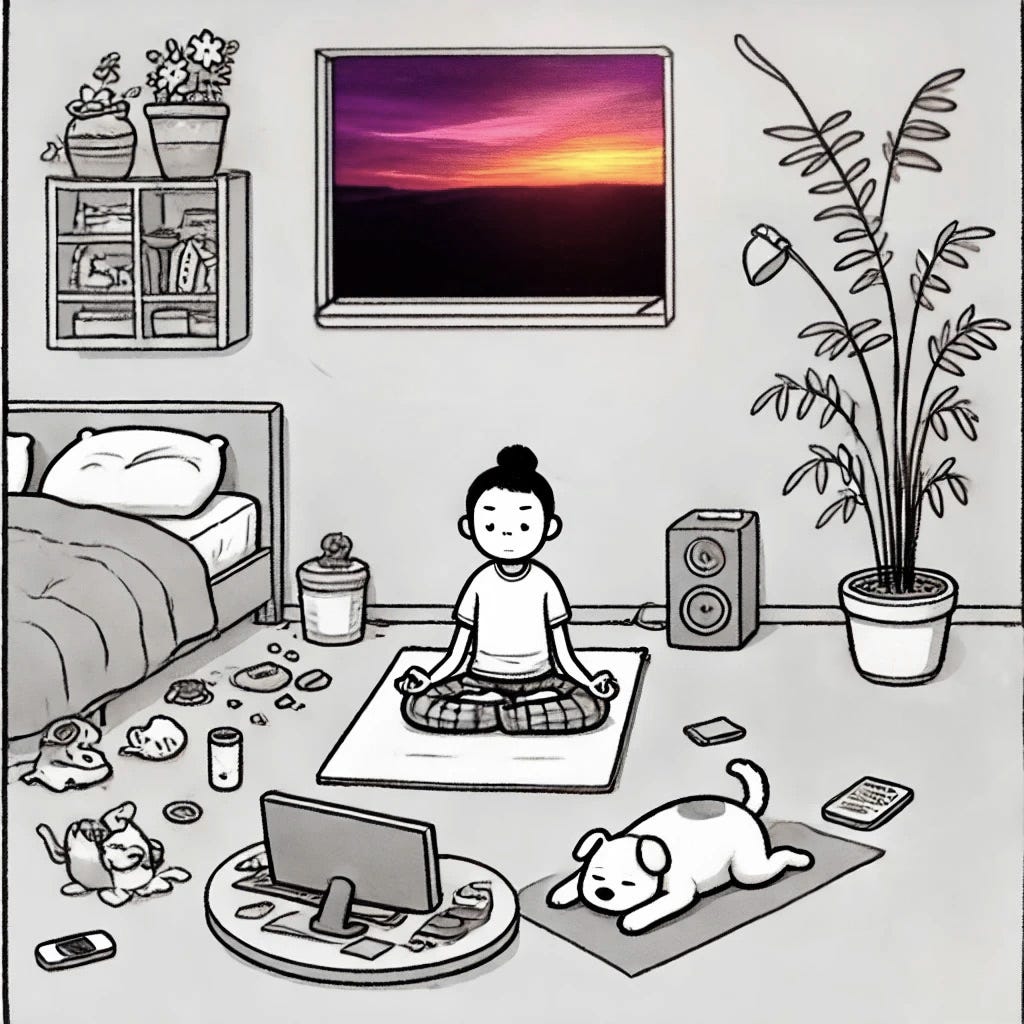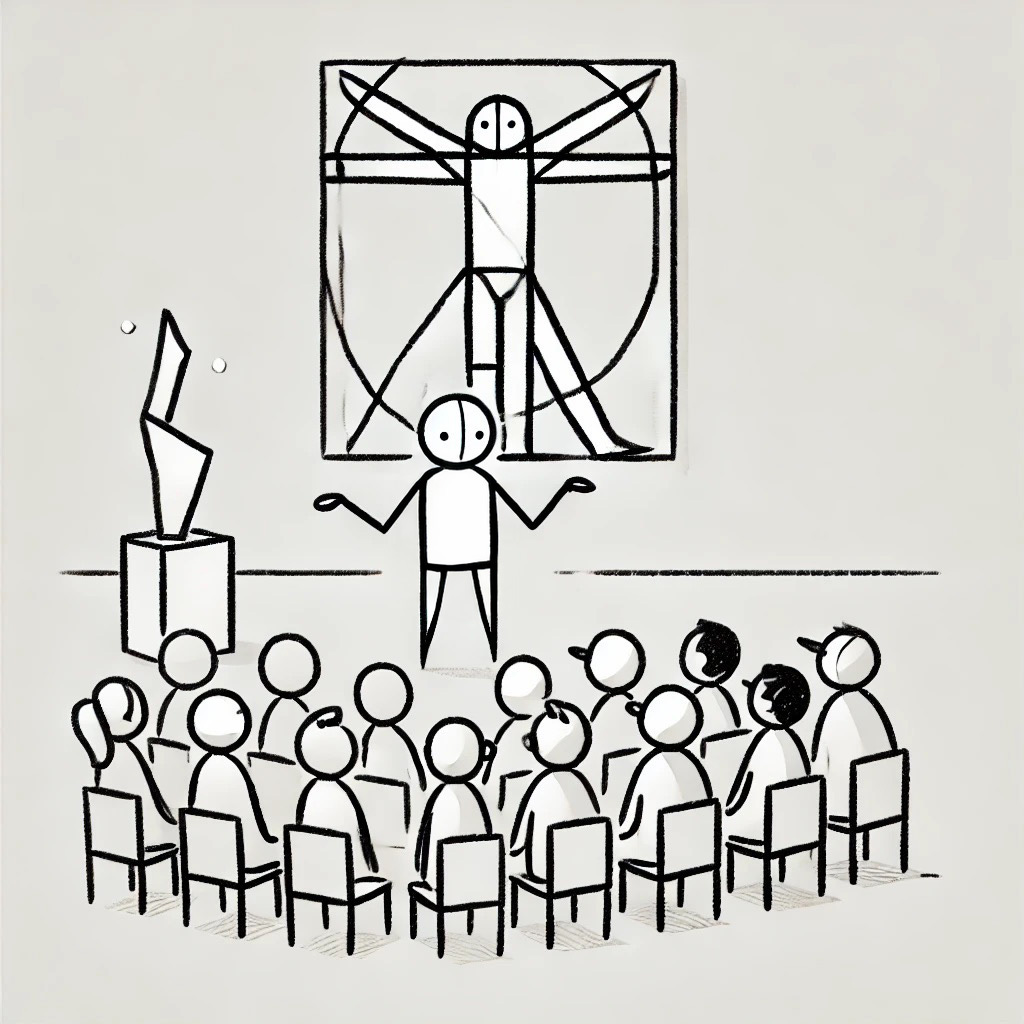Sunday E-dition: Setting Mental Health Intentions for 2025
By Charlotte Hajer with Jessica Musgrove-Ortiz
Having endured fires in our own region and felt the power of global support, our hearts are with those impacted by the Los Angeles County fires. Napa Valley Features will donate 10% of all new paid subscriptions through January to aid relief efforts.
NAPA VALLEY, Calif. — A new year means new beginnings, and if you’re anything like me, the transition from December to January is a natural time to reflect. What went well last year, and what didn’t go so well? What do I want to bring with me on this next cycle around the sun, and where do I want to be a year from now?
Many of us like to focus our New Year’s resolutions on our health. We might decide to start a gym habit, to eat better, get more steps in or try a dry January. But it’s easy to overlook an essential part of our physical wellbeing: our mentalwellness. So, here’s an invitation: Will you join me in setting some intentions for our mental health in 2025?
Mentis therapist Jessica Musgrove-Ortiz has some helpful tips to get us started. First on her list is a note on terminology. “Resolutions” can feel rigid. If you’re a results-driven person, they can be a helpful tool for making positive change. But if a resolution causes you stress or awakens your perfectionism, try setting “intentions” instead. Where a resolution is focused on a specific outcome, intentions allow more room for flexibility. They’re more of a guiding principle; a direction you set for yourself. An intention casts you as an active participant in the journey you’ve chosen and gives you the space you need to make adjustments when the realities of daily life inevitably throw challenges your way.
“Self-care and self-improvement are not a race.” - Jessica Musgrove-Ortiz
Also keep in mind that change takes time. At this time of year, Jessica said, “everything in nature is still asleep. When we plant flowers, we know to nurture the seeds; to give the roots time to grow before the plant can bloom.” The same is true for us humans, she explains. So, “use this time to reflect on what changes you want to make. Our internal systems can become overloaded if we push for too much change all at once, so take your time to slowly introduce new habits, one at a time. Self-care and self-improvement are not a race!”
Jessica also encourages us to build flexibility and realism into our plans. If you do set an intention to go to the gym three times a week, for example, develop a plan for how you’ll get there on days when you feel rested and ready, as well as an alternate plan for the days when you’re tired and sluggish. And make sure to give yourself plenty of grace. Life happens, plans might have to change, and that’s okay – it does not mean you have to abandon your goals.
Trying to figure out what mental health intentions to set for yourself in 2025? Here are some potential areas to begin thinking about:
Self-compassion. A great place to start prioritizing your mental health is counteracting the harsh inner critic we all carry with us. This principle echoes through much of Jessica’s advice for us: Recognize that it’s okay to make mistakes, to take small steps toward a goal instead of leaping bounds. To take a break when we need to. Remember that growth is not linear, and missteps are an opportunity to learn. So, replace that self-judgment with positive affirmations and encouragements.
Gratitude. We wrote about it last November: Taking time to express a sense of gratitude for big and small things around you is a great way to improve your overall wellbeing, and attune your brain as a whole toward the positive in life.
Connection. As outgoing U.S. Surgeon General Vivek Murthy reminds us, social relationships are essential to our wellbeing — and the health of our community. Building connections with others can reduce experiences of loneliness and can give us a sense of meaning and purpose. What’s more, reaching out to another person can be a uniquely powerful way to boost their mental health, too. And again, keep in mind that it’s okay to start small. Connection doesn’t have to be grand to make a difference. If a big family gathering or dinner party sounds daunting, start small. Send a text message to a friend, just to ask how they’re doing. Say good morning to a co-worker. Join an online group centered around a hobby you enjoy.
Mindfulness. As a practice centered on awareness and acceptance of our internal and external reality, mindfulness is an essential component of mental health. Most people associate mindfulness with meditation – but again, if daily meditation sounds like too much, you can start small. Take a few minutes every day to practice bringing yourself into the present, just by paying attention to what you’re doing. Try it while washing the dishes or brushing your teeth, for example. Or try the 5-4-3-2-1 exercise, wherever you are: Notice five things you can see, four things you can hear, three things you can smell, two things you can feel and one thing you can taste.
Create a self-care toolkit. Self-care does not have to be about expensive massages or yoga classes. It can be as simple as taking five minutes for some indulgent stretching before bed, having coffee with a friend, or drinking eight glasses of water a day. In 2025, take time to figure out what self-care practices help you feel stronger, calmer and more resilient – and set an intention to incorporate them into your week.
Seek support when you need it. Mental health is not a journey we have to travel alone – and asking for help is a sign of strength, not weakness. Support can take all kinds of forms: a trusted friend, a support group or a mental health therapist. Not sure where to get started? Take a look at Mentis’ Community and Youth Resource Database for supports that are available right here in Napa County.
Here's to a happier and healthier 2025 for us all!
If you or someone you love is experiencing a mental health crisis, call or text the 988 Suicide and Crisis Lifeline.
If you or someone you love needs mental health or wellness support, please visit our Mentis Community and Youth Resource Database. Mentis is one of Napa’s oldest nonprofits and provides bilingual, affordable mental health services to people of every age and income level.
If today’s story captured your interest, explore these related articles:
Sunday E-dition: New 'Tor Report' + The Broken Toe Chronicles
Sunday E-dition: Isn't It Romantic? Inside Steve Sando's Kingdom of Beans
Sunday E-dition: Rediscovering Quince, California's Forgotten Fall Fruit
Explore all Napa Valley Features stories on our main page.
Charlotte Hajer is Mentis’ Development Director. She holds a Ph.D. in cross-cultural mental health and loves to write about the way individuals experience and navigate the social and cultural world around them.
Jessica Musgrove-Ortiz is a mental health therapist with Mentis and holds an Associate Professional Clinical Counseling license with the state of California. Jessica enjoys working with the community and having the opportunity to empower clients to better understand themselves and become their own advocate by helping them gain awareness of their personal needs, values and beliefs.
Poem of the Day
Welcome to our newest section in the Sunday E-dition, "Poem of the Day," where we celebrate the power of words to evoke emotion, inspire reflection and connect us to something greater. Each week, we’ll feature timeless classics, alternating with the voices of local poets and readers. To begin, we turn to Percy Bysshe Shelley's "Ozymandias," a sonnet that reminds us of impermanence and the enduring force of time.
Ozymandias
By Percy Bysshe Shelley
I met a traveler from an antique land
Who said: Two vast and trunkless legs of stone
Stand in the desert. Near them, on the sand,
Half sunk, a shattered visage lies, whose frown,
And wrinkled lip, and sneer of cold command,
Tell that its sculptor well those passions read
Which yet survive, stamped on these lifeless things,
The hand that mocked them and the heart that fed.
And on the pedestal, these words appear:
"My name is Ozymandias, king of kings:
Look on my works, ye Mighty, and despair!"
Nothing beside remains. Round the decay
Of that colossal wreck, boundless and bare,
The lone and level sands stretch far away.
—
Are you a poet, or do you have a favorite piece of verse you'd like to share? Napa Valley Features invites you to submit your poems for consideration in this series. Email your submissions to napavalleyfeatures@gmail.com with the subject line: "Poem of the Day Submission." Selected poets will receive a one-year paid subscription to Napa Valley Features (a $60 value). We can’t wait to hear from you.
Levity Corner
Caption contest: Pick your favorite caption or add your own in the comments below.
Possible captions:
"The secret is inner peace... is a really strong blind spot."
"The sunset is calm, the room is not, but I am zen."
"They said to clear my mind, not my floor."
"Zen mode: engaged. Clean mode: still buffering."
“Caption Haiku:
Dog sits, calm and still,
I’m starting to think he’s wise—
My guru at last.
Last week’s contest results
In “Sunday E-dition: Maestro Tom Rinaldi,” the winning caption was, "The key to modern art is nodding thoughtfully while stroking your chin,” with 43% of the votes.
"And if you look closely, you’ll see it’s actually a coat rack."
"Remember, it’s not about understanding it — it’s about pretending you do."
"The key to modern art is nodding thoughtfully while stroking your chin."
"And here we see the artist’s bold rejection of traditional craftsmanship."
"It’s titled ‘Untitled,’ which, ironically, is quite a bold statement."
Last Week
Tim Carl reported in "The Napa Truffle Boom? A Landmark Discovery and a Growing Industry" that a 405-gram Périgord truffle, one of the largest ever found in California, was unearthed in a Napa Valley orchard during the Napa Truffle Festival. Guided by Zara, a trained truffle-hunting dog, the discovery highlights Napa’s potential as a hub for cultivated truffles, with wineries like Raymond Vineyards integrating truffle orchards to diversify offerings and enhance brand prestige. While truffle farming offers sustainability benefits like reduced imports and improved soil health, experts caution about ecological impacts, including the introduction of non-native fungi. As climate change threatens European truffle regions, Napa’s conditions position it as a promising alternative for the next several decades. The milestone reflects the region’s ability to innovate in agriculture, blending luxury, sustainability and culinary artistry.
Ruby Risch, in "Tom Rinaldi: The Maestro of Napa Valley," profiled Tom Rinaldi, a veteran winemaker with over four decades of experience currently leading Patent Wines in Napa Valley. Risch detailed Rinaldi's journey from a Navy avionics specialist to a winemaking pioneer, highlighting his philosophy of blending science, intuition and creativity in crafting wines that reflect Napa's dynamic terroir. The piece also explored Rinaldi's dedication to community, his passion for cycling and his meticulous approach to each step of winemaking from grape selection to barrel aging. Rinaldi's storytelling and artistry combined with his commitment to the natural rhythms of winemaking have solidified his legacy as a key figure in Napa's wine scene.
In "A California Rarity: Sauvignon Gris at Chimney Rock," Tony Poer detailed the vineyard's unique commitment to sauvignon gris, a rare pink-skinned mutation of sauvignon blanc. Winemaker Elizabeth Vianna discussed her two-decade effort to refine Chimney Rock’s white wine program, inspired by Bordeaux's Haut-Brion Blanc, but adapted to Napa's climate. Poer traced the grape's introduction by the late Anthony John Terlato, who envisioned a distinct Bordeaux-style blend, and highlighted the challenges and potential of cultivating this niche variety. Vianna described sauvignon gris as a key to balancing the acidity of sauvignon blanc and creating nuanced wines that honor Bordeaux traditions while embracing Napa’s terroir. Despite its limited footprint in California, Vianna remains an advocate for the grape’s expansion.
Susan Crosby shared the return of the Green Screen Film Series in "Documenting Solutions: The Green Screen Film Series Is Back," spotlighting free screenings of environmental documentaries at the Napa County Library. Co-sponsored by Napa Climate NOW!, the series features films on regenerative agriculture, the fast-fashion industry's impact and water conservation, showcasing solutions and actionable strategies. Titles include “Common Ground,” “Unstitched: How the Fashion Industry is Destroying the Planet,” and “The Beaver Believers,” each paired with discussions and short films to encourage community engagement. Crosby highlighted the series’ blend of humor, inspiration and practical ideas for addressing climate challenges.
In "Make Your Own Compost," Cindy Watter shared practical advice on composting, detailing its environmental and gardening benefits. Drawing from her experience as a UC Master Gardener, she outlined the three primary methods—hot, warm and cold composting—and provided tips on materials, maintenance and avoiding common pitfalls. Watter emphasized how composting reduces landfill waste, improves soil health and conserves water, while encouraging readers to try creating this valuable soil conditioner themselves. She also highlighted Napa's advanced composting programs and upcoming workshops for those interested in starting their own compost piles.
Next Week
Next week we have more engaging articles from Napa Valley Features contributors. The UC Master Gardeners of Napa County will provide advice for “Green Wednesday,” while Dan Berger will spotlight a Napa Valley wine pick and ask, “What’s the smell?” Tim Carl will explore free pest-control services in Napa County, and Mariam Hansen will reflect on the history of flooding in the region. Additional features and insights will also be included.










